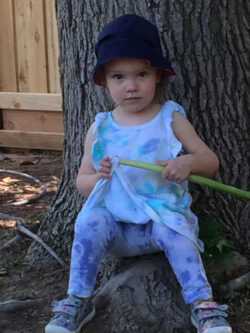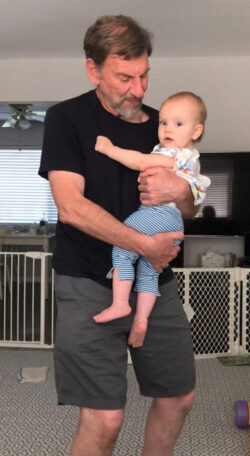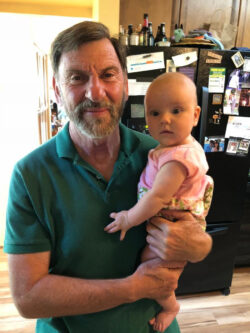Now seemed like the perfect time to do a live webinar. Here are the details:
The SATPAC Approach: An Effective and Efficient Way to Remediate Speech Sound Disorders
A Free Live Webinar (limited to the first 1000 registrations) .6 ASHA CEUs
A recording of the free webinar will follow (also for .6 ASHA CEUs)
April 22 and 23 (4 PM – 7 PM Pacific each night, 5 PM – 8 PM Mountain, 6 PM – 9 PM Central and 7 PM -10 PM Eastern)
Presented by: 2011 ASHF Award Winner – Stephen Sacks, M.A., CCC-SLP
Description: As SLPs and SLPAs, we spend a lot of time remediating speech sound disorders and particularly the /r/ and /s/ sounds. Come learn how to use the SATPAC Approach to systematically remediate the 7 most common errors (/r/, /s,z/, /l/, /k,g/, /sh/, /ch,j/ and /th,TH/).
The SATPAC Approach incorporates conversation-like activities into the earliest phases of therapy (normal rate, natural prosody and coarticulation) along with other best practices (facilitating contexts, the use of nonwords and many repetitions) to quickly, efficiently and systematically remediate speech sound disorders.
Four recent peer-reviewed studies using these techniques with the /s/ and /r/ sounds showed that most students were remediated in 2 ½ to 3 ½ hours of therapy time for /s/ and 7 1/2 hours for /r/ (compared to ASHA NOMS data of 18-20 hours to move 1 step on their scale). Remediation of phonological processes, case studies and research will be included with hands-on opportunities to try out these new techniques.
Registration and/or Information for the workshops:
https://satpac.com/sacks-workshops/free-webinar/
Email: steve@satpac.com
Website: www.satpac.com
And one of the most powerful statements about SATPAC comes from SATPAC users who have reviewed the program on the ASHA Online Buyers Guide: http://buyersguide.asha.org/Listing/Company/SLP_-_School_Related_Products/Articulation__Phonology/462024
And finally, comments made by participants in recent workshops:
– Great workshop!
– This workshop is awesome and came highly recommended by a colleague.
– This is super useful and all SLPs/SLPAs should know these effective strategies.
– Great workshop and I can’t wait to see my /r/ and /s/ kids.
– This program (SATPAC) has the potential to change how I remediate sound disorders.
– Loved this course! You are a very dynamic speaker with clear instructions.
– I feel like I can go back to school on Monday and start using these techniques and start making some progress. Yay!
– Excellent presentation.
– It was a great conference! Thank you.
– Excellent information! I feel that I can apply this information and these techniques to my caseload next week. You have given me a new outlook on articulation-and I’m excited to work on /r/ now.
– Great day of learning!
– One of the best courses I have taken in a long time.
– Thank you for your contributions to our field. So many of our students spend way too long in Speech Therapy for artic. errors.
– The information will be so useful to me with my clients. I can’t wait to try and use the program on my artic. kids. Info was very clear and practical.
– I enjoyed the whole thing-I was engaged from beginning to end. Thanks so much!
– Great conference! I can’t wait to use the SATPAC Program with my students.
– You are a great presenter!!
– Thank you for a great day of learning!
– This course was truly amazing. After twenty years in the field, I found that Steve presents information in a clear, concise way but it’s all game changing for my current skill set. He encourages a consistent analysis that probes errors more accurately, providing a process of therapy that clear surpasses many methods I’ve learned to date. He provides insight into methods that work across all settings: including the group and time constraints found in the school-based practice.
– In school, we learn all about speech disorders, delays, etc. We learn of course, developmental milestones, and a lot of anatomy, but nothing is mentioned about how to treat kids with speech/language issues. I basically graduated with no experience in providing therapy. The kids don’t want to know the extreme details about why they have a hard time-they want you to help them. Now I have some amazing tools under my belt to do that. I had speech in elementary school for a frontal lisp and the only thing I remember about it was my sticker book. I loved everything you had to say, teach and share. I also love your outlook on working with the kids-keeping a positive attitude and building a good rapport. I feel like they get overlooked so often, but it’s so important. Thank you so much!










